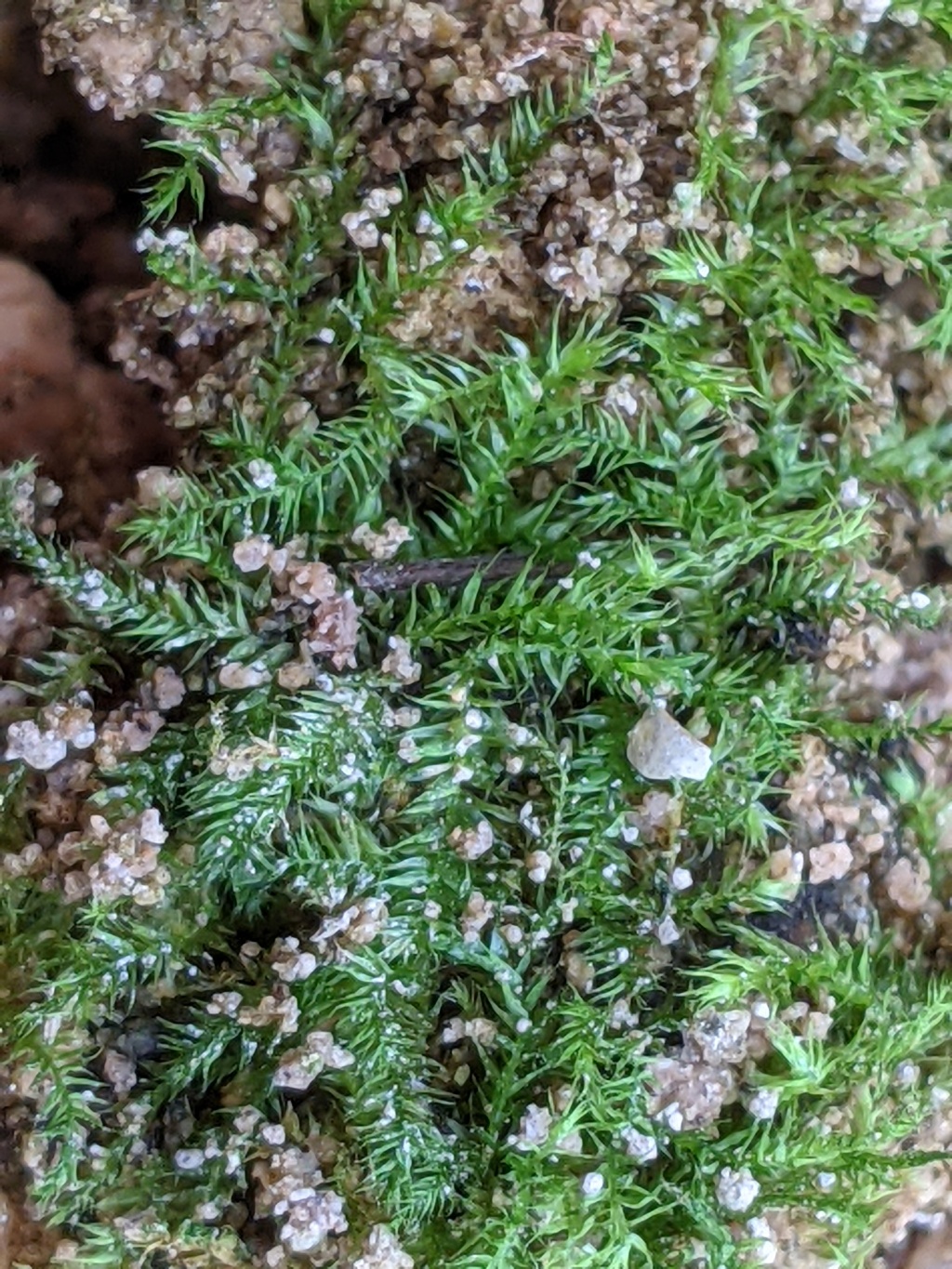Hedenaesia muriculata
(Hook.f. & Wilson) Huttunen & IgnatovInterwoven mats on logs, tree trunks, shrub stems, rocks and soil. Stems prostrate and creeping, commonly c. 20 mm long, irregularly, pinnately or slightly bipinnately branched, with fascicles of brown rhizoids on ventral surface, central strand absent. Stem and branch leaves differing mainly by size, spreading when moist, scarcely altered wen dry, ovate-lanceolate, weakly concave; costae single, 1/2–3/4 leaf length, often ending in abaxial spine; apices abruptly acuminate; margins finely denticulate near base; cells linear-rhombic, 40–122 (–138.5) μm long, (5–) 6.5–10 μm wide; alar cells subquadrate in a small and poorly differentiated group; stem leaves (1.1–) 1.2–1.5 mm long, 0.4–0.5 mm wide, evenly arranged around stem or slightly homomallous; branch leaves c. 1.1–1.4 mm long, 0.3–0.55 mm wide, weakly complanate. Setae 6–13 mm long, red-brown, papillose. Capsules horizontal, oblong-cylindric or obovoid, curved, c. 1.5 mm long. Operculum rostrate from conic base, c. 1.5 mm long.
VVP, GipP, EGL, EGU, HSF, OtR, Strz. In rainforest or wet sites near creeks near the coast and in near coastal ranges throughout Victoria and at the entrance of lava tubes at Byaduk Caves in the south-west. Also NSW, ACT and Tas. New Zealand.
 Spinning
Spinning